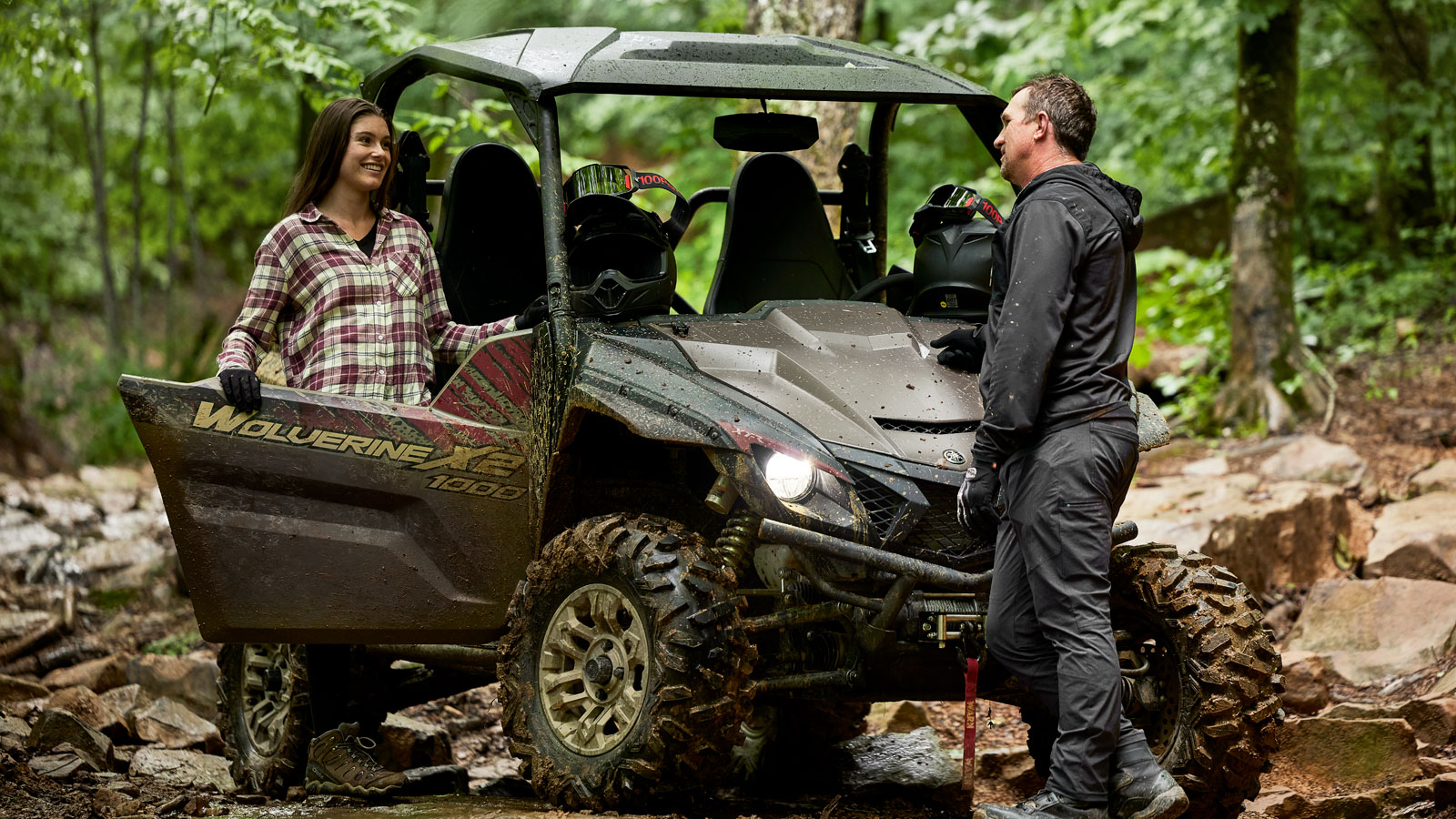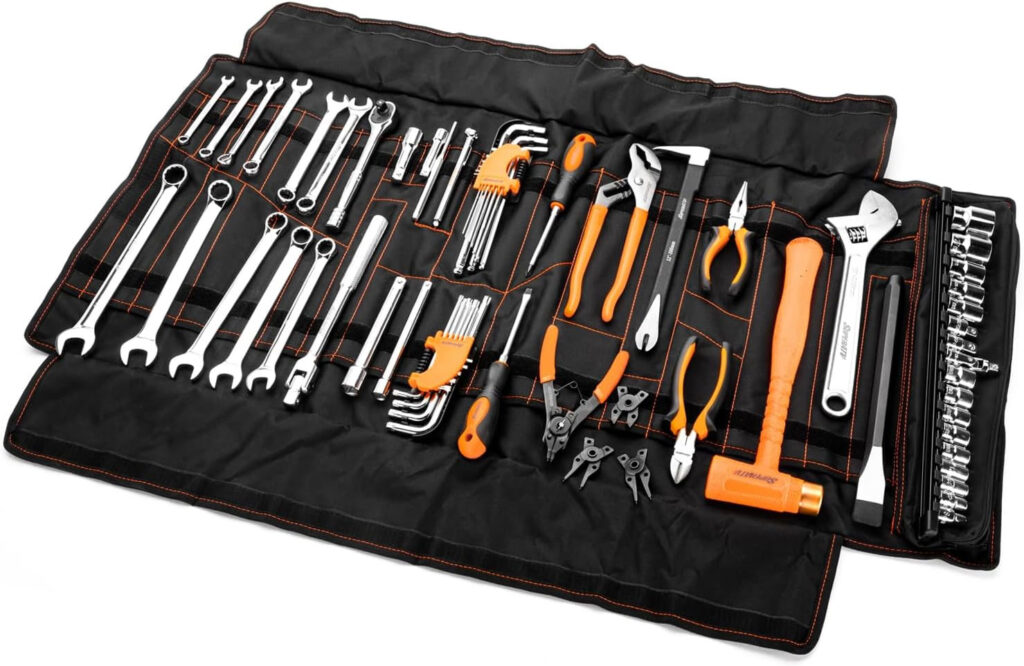
If you’re just getting into the sport of off-roading on an ATV or SxS, you know how exhilarating it can be. Whether it be from blazing down fast trails, or just from being able to get away from the stresses of regular life, enjoying some time riding can take the weight of the world off of your shoulders. It can also be extremely stressful in the event you have a mechanical issue that leaves you sidelined on the trails, so we’re here to help with some survival skills and tips for new owners.
One of the most common mistakes that new owners make is not going out properly prepared. You might be wondering, prepared for what? While you can’t be prepared for every little thing that can happen out on the trail, you can prepare for the most common issue that enthusiasts face. This can range from fixing a flat tire to having the proper equipment for getting yourself unstuck in a sticky situation when there’s nobody else around.
Thank you to Yamaha for sponsoring this New Rider series.
With years of experience under the belts of our various contributors, we’ve decided that building a survival kit is one of the best things you can do. If you’ve purchased a Utility ATV or SxS, you’ll have no issue storing a decent size box or bag that can conveniently keep everything safe and organized. Organization can be your best friend when you’re having to make trailside repairs.
One of the most common issues you’ll have while riding is the potential for a flat tire. Tires today are pretty sturdy and puncture-resistant, but people also said that the Titanic was unsinkable. This is why we highly recommend a good quality tire plug kit when gathering items for your safety kit. Now make sure that you get a tire plug kit and not a patch kit. Patches are for the inside of the tire carcass but a tire plug is installed from the outside with a special tool that pushes the plug through the puncture.
While they work great for a single tire puncture, we’ve seen people use multiple plugs to seal sizable gashes in tires that allowed users to limp home. Now if you have your plug kit, you’ll want a way to inflate those tires as well. Here is where you have a few options. You can use C02 cartridges or you can purchase a small portable air compressor, which is our preferred method.

Another thing you’ll want in your off-road survival kit is a decent set of tools. You never know when you might bend a tie-rod, might have to pull off a belt cover, bend handlebars back, or just make some slight adjustments on the trail. We’re not saying you need to pack up the garage, but you can get a decent 150-200-pc tool kit that comes in a handy tool roll or carrying case for a good price. We’d also recommend that you throw in a few little extra goodies that can come in handy on the trail. Things like rags, zip ties, matches, and duct tape just to name a few.
If you own a SxS, it would be highly advisable to have a spare belt (if your unit uses one.) A broken belt can leave you stranded in the middle of nowhere. When you eventually change your drive belt (during a regular maintenance interval), we highly recommend keeping that as a spare for just such an occasion.
Other items that really deserve their place in your survival kit are tow ropes and soft shackles. If you are unfortunate enough to break down in the middle of nowhere and can’t get going, you’ll need some way of getting back to your camp or tow vehicle. Chances are you may not need them for yourself, but if you see someone stranded, be a good neighbor and ask if they need some assistance. Karma is alive and well in the off-road community.
These items lead me to one of the most important self-recovery items you can have, which is a winch. On a SxS or Utility ATV, a winch can help you to get through some tough obstacles OR be used to get yourself unstuck when there’s no one else around. While using a winch is fairly self-explanatory, it wouldn’t hurt for you to take some time to get familiar with its operation and the different techniques you can use to get yourself unstuck. Additionally, you can practice proper winch etiquette by using the right tools to protect yourself and the environment. Some of those tools are a tree saver, D-ring shackles, and snatch blocks.
Getting to use these tools ahead of time and becoming familiar with their purposes can save you a lot of stress and headaches if you need to use them in the field. Just like we stated before, being organized really makes a difference when the pressure is on.
One final piece of crucial equipment you should have in your survival kit is a good first aid kit. These come in a variety of sizes, and while you can get by with the basics, sometimes it’s nice to be a little over-prepared. Some of the kits we’ve either bought or assembled ourselves have the basics of band-aids, antiseptic spray, bug bite itch cream, and aspirin. If you’re going to be exploring remote areas, we like having things like medical scissors, gauze, and other items that make the kits a little more advanced than what you might need. It’s better to have than to want in an emergency.
Our final piece of must-have items doesn’t necessarily belong in your survival kit but definitely deserves a spot in the cab of your SxS or on the bars of your ATV, and that is a GPS unit that you’re familiar with. It’s not hard to get lost when you’re off-roading. Even if you’re someplace that you feel very familiar with, you can easily get turned around and lost if you become distracted or are under stress from you or someone in your party who has an injury. An added bonus to carrying a GPS is that if you need to call 911 for emergency assistance, you can give specific latitude and longitude locations for them to see exactly where you are located.
Now if you need emergency services but the area you ride at has very limited cell signal, we highly recommend using a device like the SPOT or Garmin InReach satellite communication devices. You can program these devices to essentially leave breadcrumbs for pre-selected people to see where you are and where you’ve been while you’re out. In the event that you or someone in your party is injured or needs medical attention, you can contact emergency services at the press of a button, which provides your coordinates to be sent to the dispatching agency.
 Your Privacy Choices
Your Privacy Choices